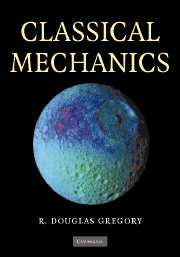Book contents
- Frontmatter
- Contents
- Preface
- 1 Newtonian mechanics of a single particle
- 2 Multi-particle systems
- 9 The energy principle
- 10 The linear momentum principle
- 11 The angular momentum principle
- 3 Analytical mechanics
- 4 Further topics
- Appendix Centres of mass and moments of inertia
- Answers to the problems
- Bibliography
- Index
9 - The energy principle
Published online by Cambridge University Press: 05 September 2012
- Frontmatter
- Contents
- Preface
- 1 Newtonian mechanics of a single particle
- 2 Multi-particle systems
- 9 The energy principle
- 10 The linear momentum principle
- 11 The angular momentum principle
- 3 Analytical mechanics
- 4 Further topics
- Appendix Centres of mass and moments of inertia
- Answers to the problems
- Bibliography
- Index
Summary
KEY FEATURES
The key features of this chapter are the energy principle for a multi-particle system, the potential energies arising from external and internal forces, and energy conservation.
This is the first of three chapters in which we study the mechanics of multi-particle systems. This is an important development which greatly increases the range of problems that we can solve. In particular, multi-particle mechanics is needed to solve problems involving the rotation of rigid bodies.
The chapter begins by obtaining the energy principle for a multi-particle system. This is the first of the three great principles of multi-particle mechanics that apply to every mechanical system without restriction. We then show that, under appropriate conditions, the total energy of the system is conserved. We apply this energy conservation principle to a wide variety of systems. When the system has just one degree of freedom, the energy conservation equation is sufficient to determine the whole motion.
CONFIGURATIONS AND DEGREES OF FREEDOM
A multi-particle systemS may consist of any number of particles P1, P2, …, PN, with masses m1, m2 …, mN respectively. A possible ‘position’ of the system is called a configuration. More precisely, if the particles P1, P2, …, PN of a system have position vectors r1, r2, …, rN, then any geometrically possible set of values for the position vectors {ri} is a configuration of the system.
- Type
- Chapter
- Information
- Classical Mechanics , pp. 221 - 244Publisher: Cambridge University PressPrint publication year: 2006



